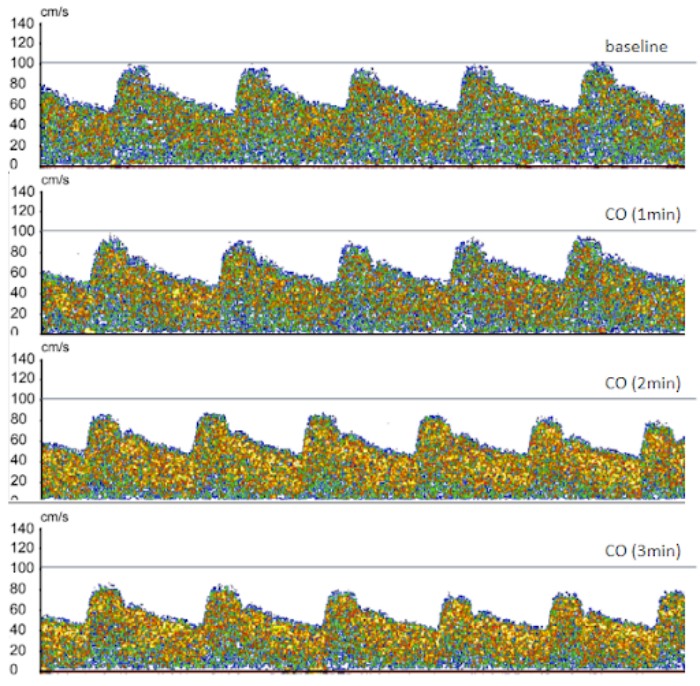The brain consumes approximately 20% of the body’s total oxygen supply. Maintaining adequate flow of blood through the brain is essential to health. Using a transcranial doppler ultrasound (TCD), researchers at the Sheffield Multimodal Imaging Centre (SMIC) are studying how a common air pollutant, carbon monoxide, is affecting cerebral blood flow.
A non-invasive look into the brain
To study how this toxic gas affects human physiology, it is essential to be able to image cerebral blood flow. TCD is a non-invasive technique that uses ultrasound to measure the speed of blood flow through blood vessels in the brain.
The most common blood vessel scanned is the middle cerebral artery (MCA), which can be found by placing the ultrasound probe on the temple and scanning at a depth of 35-55 mm. The MCA supplies major parts of the cortex and internal structures of the brain, and is the cerebral blood vessel most commonly affected by disease.
Often, the sonographer aims for the point where the middle and anterior cerebral (ACA) arteries originate from the internal carotid artery, which produces a characteristic waveform, seen in Figure 1.



